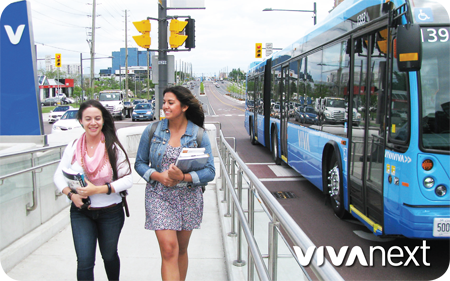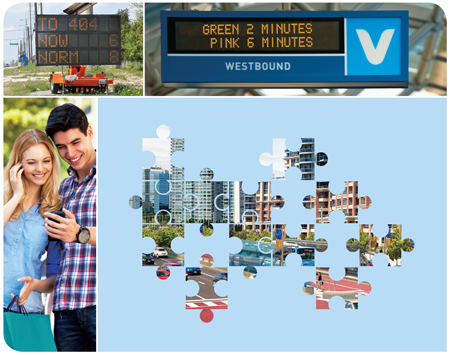York University, a globally recognized research centre, recently announced that it had chosen Markham Centre as the preferred location in its bid to build a new satellite campus in York Region. York Region is one of Ontario’s fastest-growing major urban areas, and with a current population of more than 1.1 million, is the only municipality of its size in North America with no university campus.
The City of Markham was selected based on its ability to demonstrate alignment with 10 core principals including, having a campus within an urban centre, easily accessible across the Greater Toronto Hamilton Area, transit oriented development, use of public infrastructure and strong local partners.
This achievement shows how York Region’s Centres and Corridors strategy, of which vivaNext is a key part, is already resulting in important economic development benefits for our region. It’s more proof that its long term, visionary planning framework will channel new jobs, housing and shopping within the newly urbanized centre in Markham.
As Markham Mayor Frank Scarpitti said in their news release, one of the reasons the Markham Centre location was chosen, in addition to all its “incredible amenities,” is that Markham has a reputation for having bold initiatives. The Mayor also pointed to the city’s efforts in attracting major businesses such as Enbridge, Honda and Aviva as well as attracting the Pan Am games to the city.
The timing of York University’s announcement could not have been better. Transit, parkland and local secondary plans are currently underway. The city can fully integrate a university within the new downtown urban fabric.
York Region’s vivaNext rapidway project along Highway 7 is in the last final stages with bus lanes set to open by the end of the year. Additional Bus Rapid Transit is planned for Markham Centre along Enterprise Drive to Unionville Go Terminal, scheduled to be completed in 2019, making this area truly the model of live, work, shop, play and now get educated!










